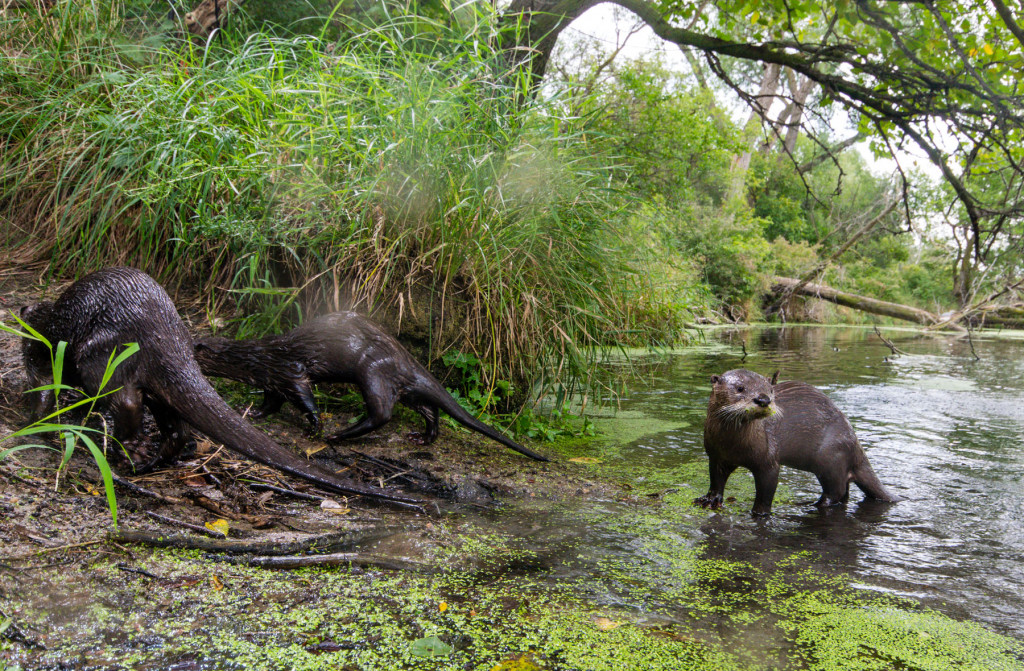
Story and photos by Eric Fowler
If you’ve ever “blazed a trail” through the woods, or gone “bushwhacking” as some might say, you know it can often be an unpleasant experience pushing your way through branches, brush and tall grass.
Life is much easier on a trail. And wildlife agree. That’s why a hike through any woodland or prairie will reveal a series of what we often call game trails. These trails, to put it simply, are the easiest paths between points A and B.
That was certainly the case with a trail on a friend’s property along the Platte River south of Wood River, on which I placed two camera traps for the better part of two years in hopes of capturing a photo of a river otter.

Not only did the camera capture photos of otters, including a mother and her five pups, it also captured images of other species using the trail, including raccoons, mink, mice, muskrats, opossums, deer, a bobcat, beavers, a hen wood duck and her brood, a few random birds that just dropped in for a drink and three species of turtles: painted, snapping and spiny softshell. And raccoons. So many photos of raccoons.
Trails such as this one are found everywhere there is wildlife. Some have been used for generations. Some were so well defined that man, be it the Native Americans, Euroamerican explorers or fur traders, followed them and took the same routes. Some even became roads.
This trail covers a scant 75 feet of land between the two water bodies it connects. One water body is what is left of the south channel of the Platte River. Now disconnected from the river where it splits from the main channel near Kearney, its flows are fed mainly by groundwater. The other, on the north end of the trail, is a stream that flows from the Platte during high flows and is fed by groundwater when the river is low. Both streams flow through sandpit lakes above the trail and rejoin the main channel of the Platte about one-third of a mile downstream.

On the north end, the trail climbs a steep bank, crosses a two-track trail road, and ducks into a 40-foot stretch of grass and brush before dropping down the bank into the south channel of the Platte. One of my cameras captured photos on the trail through the brush during the day. The other was set on the bank of the south channel, capturing photos both day and night.
Few of the photos are perfect. The camera on the water’s edge never made it more than a few days before its lens was covered with dirty water spots left by otters or raccoons shaking to dry off as they left the water and headed up the trail. Or by the same critters leaving wet nose prints.

Most of the photos — there must be thousands — captured raccoons using the south channel of the Platte as a trail, wading along the edge in search of food. But this game trail was often their approach to or from that path.
The deer were likely using this trail to move between woodlands north and south of the streams. But most of the species, including the otters, turtles, ducks, mink and other species, used it to move between the two streams they called home.
It’s not the only trail between these habitats. There are two other well-worn paths between the two waters. All three have something in common. They are at the narrowest points in the territory they share. These critters are smart: No need to waste energy bushwhacking their way through the forest when they can take a road. ■
